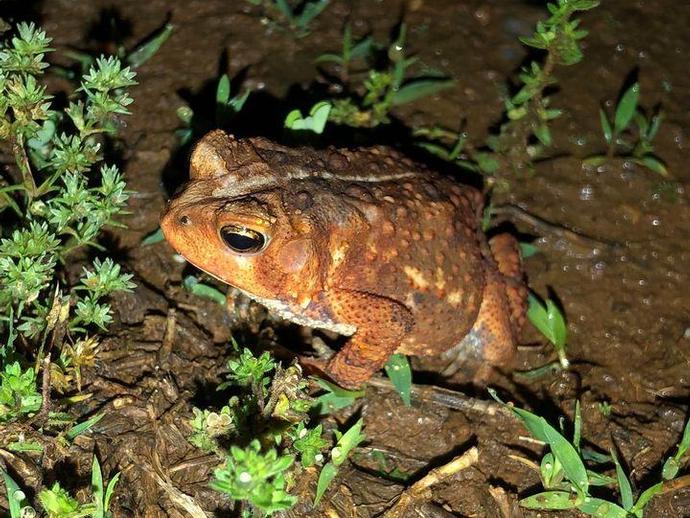May 9, 2021
We're reaching into the archives for today's #BenInNature update presented by our friends at Carter Bank & Trust! The following post was originally published on June 22, 2020.
The eastern American toad (Anaxyrus americanus americanus) is a common sight in southwest Virginia and it's the most common subspecies of the American toad. It can be found throughout much of eastern North America (although it doesn't extend much farther south than North Carolina). Another subspecies, the dwarf American toad (A. a. charlesmithi) can be found in Arkansas and parts of neighboring states, while a third subspecies, the Hudson Bay toad (A. a. copei) can rarely be found in isolated populations in northern Ontario.
The eastern American toad can be spotted in a wide variety of habitats. All it needs are a variety of bugs to eat, a few damp spots where it can hide, and a shallow pool in which to breed and lay eggs. When VMNH Associate Curator of Invertebrate Zoology Dr. Kal Ivanov and I went up to Natural Bridge a couple of weeks ago to film our video for Virtual Reptile Fest, we actually saw several large mud puddles that were filled with toad tadpoles! These tadpoles are easy to identify based on their very skinny tails and black bodies.
These toads are mostly active at night, although you might spot a few hopping around in the late afternoon. During the daytime, they tend to hide in damp leaf litter and under stones and logs to keep from drying out.
Bonus fun fact: If you have a toad that keeps hopping onto your porch night after night, and you also have some patience, you can train it to eat bugs from your hand! I speak from experience.
ABOUT #BenInNature
Social distancing can be difficult, but it presents a great opportunity to become reacquainted with nature. In this series of posts, Administrator of Science Ben Williams ventures outdoors to record a snapshot of the unique sights that can be found in the natural world. New updates are posted Monday - Friday, with previous posts highlighted on the weekends. This series of posts is made possible thanks to the support of VMNH Corporate Partner Carter Bank & Trust (www.cbtcares.com).
NATURE PHOTO IDENTIFICATIONS
If you discover something in nature that you would like help identifying, be sure to message us right here on Facebook with a picture (please include location and date of picture) and we'll have our experts help you identify it!

 Hours & Admissions
Hours & Admissions Directions
Directions

